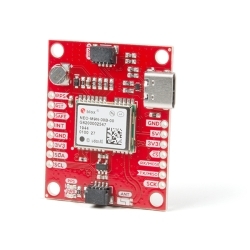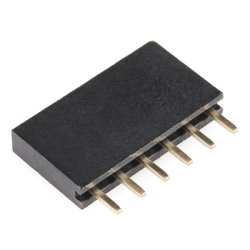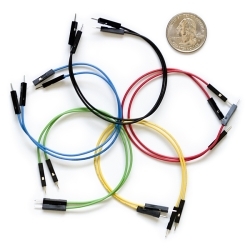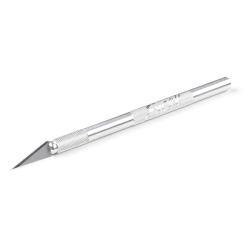SparkFun GNSS L1/L5 Breakout - NEO-F10N, SMA
The SparkFun NEO-F10N GNSS L1/L5 Breakout is a super economical GNSS board with meter-level positional accuracy.
Helpful Documentation
Product Overview
The SparkFun GNSS L1/L5 Breakout - NEO-F10N, SMA is a standard precision GNSS board with meter-level positional accuracy. The NEO-F10N uses the L1/L5 bands instead of the more commonly seen L1/L2 bands. Utilizing the L5 band, the NEO-F10N delivers improved performance under challenging urban environments. The L5 signals fall within the protected ARNS (aeronautical radio navigation service) frequency band, leading to less RF interference.
This breakout supports the concurrent reception of three GNSS constellations: GPS, Galileo, and BeiDou. The proprietary dual-band multipath mitigation technology from the u-blox F10 allows the module to choose the best signals from both bands to achieve a significantly better position accuracy in challenging urban environments than with the L1 band alone.
What's different from other u-blox modules is that the NEO-F10N module only supports one serial UART communication port. We included a CH340 USB-to-serial converter to connect the board to a computer's USB port easily. For users connecting the board's serial UART pins to a microcontroller or radio, you will need to cut the USB-TX and USB-RX jumpers to avoid bus contention. Pins for power, serial, pulse per second, and control pins are broken out to 0.1"-spaced pins on the board's edge. We have also conveniently included a 1x6 header should you connect a BlueSMiRF v2 to transmit data wirelessly!
The breakout is also has an on-board rechargeable battery that provides power to the RTC on the NEO-F10N. This reduces the time-to-first fix from a cold start (~28s) to a hot start (2s). The battery will maintain RTC and GNSS orbit data without being connected to power for plenty of time. We have included an SMA connector for a secure connection.
U-blox-based GPS products are configurable using the popular but dense Windows program u-center. Plenty of different functions can be configured on the NEO-F10N: baud rates, update rates, spoofing detection, external interrupts, SBAS, etc. To get started, we've included a few basic UART examples with our SparkFun Arduino Library.
Features & Specs
- 1x USB Type C Connector
- ESD Protection Diodes for USB Data Lines
- CH340C USB-to-Serial Converter
- Integrated SMA Connector
- Concurrent Reception of GPS, Galileo, and Beidou
- Receives L1/L5 Bands
- Voltage: 5V or 3.3V but all logic is 3.3V
- Current: 21mA-26mA (varies with constellations and tracking state)
- AP2112K 3.3V/600mA Voltage Regulator
- Backup Battery to Aid in Hot Starts
- Time to First Fix: 28s (cold), 2s (hot)
- Max Navigation Rate for Single GNSS Configuration (GPS): 20 Hz
- Positional Accuracy (GPS): 1.5m
- Time Pulse Accuracy: 30ns
- Operational Limits
- Max G: ≤ 4G
- Max Altitude: 80km (49.7 miles)
- Max Velocity: 500m/s (1118mph)
- Software Configurable
- Baud Rate (38400 Baud, default)
- Odometer
- Spoof Detection
- External Interrupt
- Pin Control
- Many others!
- Supports: NMEA, UBX over UART
- LED
- Power
- Pulse Per Second (PPS)
- Jumpers
- USB Shield (SHLD)
- USB 5V (USB-5V)
- Measure (MEAS)
- USB Transmit (USB-TX)
- USB Receive (USB-RX)
- External 3.3V (EXT-3V3)
- Power LED (PWR)
- PPS LED (PPS)
- Board Dimensions (not including SMA connector)
- 50.8mm x 38.1mm
- Weight: 9.75g
Documentation
SparkFun Resources
- Schematic
- KiCad Files
- 3D Model
- Board Dimensions
- Hookup Guide
- Building a GPS System
- Arduino Library
- GitHub Hardware Repo
u-blox NEO-F10N Resources
Customer Reviews

Stock and Customer Discounts
Available Discounts
- $39.43 | 10+ units
- $37.35 | 25+ units
- $35.28 | 100+ units


 Hookup Guide
Hookup Guide Schematic
Schematic Datasheet (NEO-F10N)
Datasheet (NEO-F10N)
















